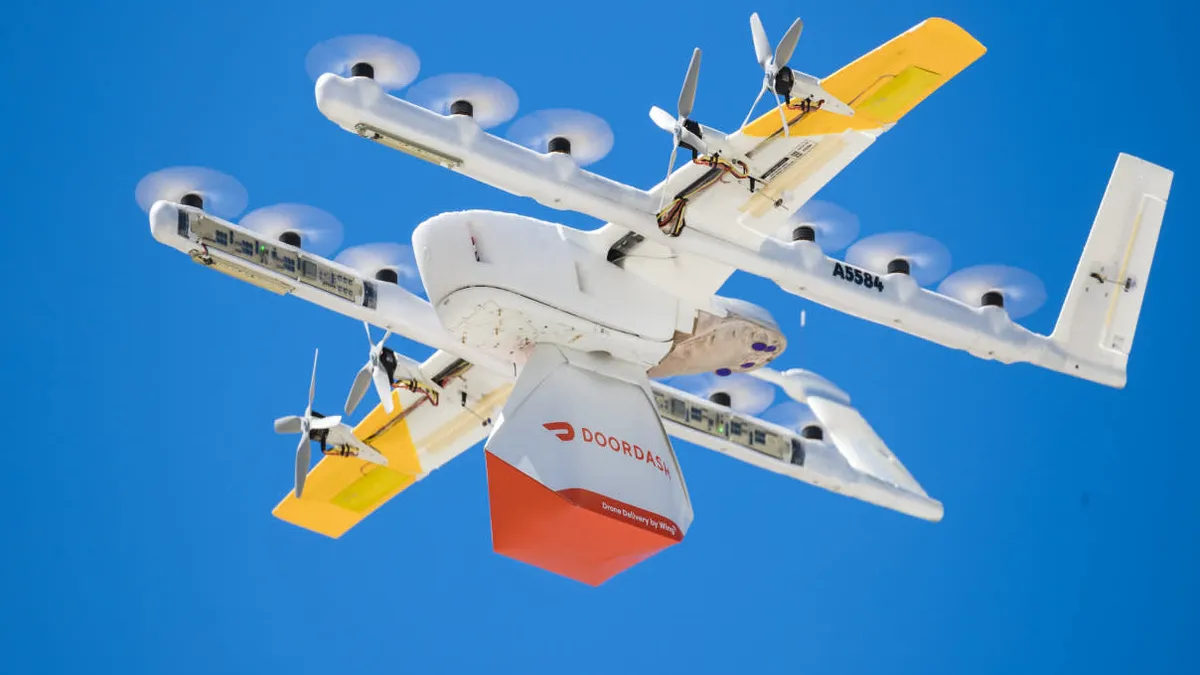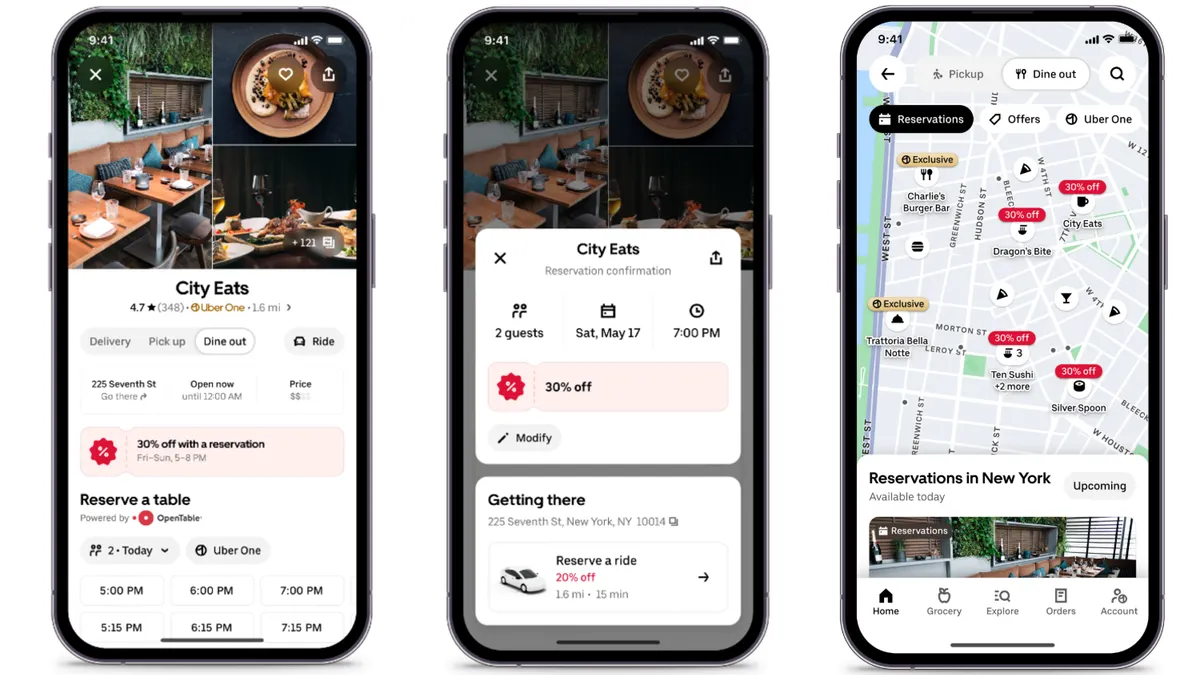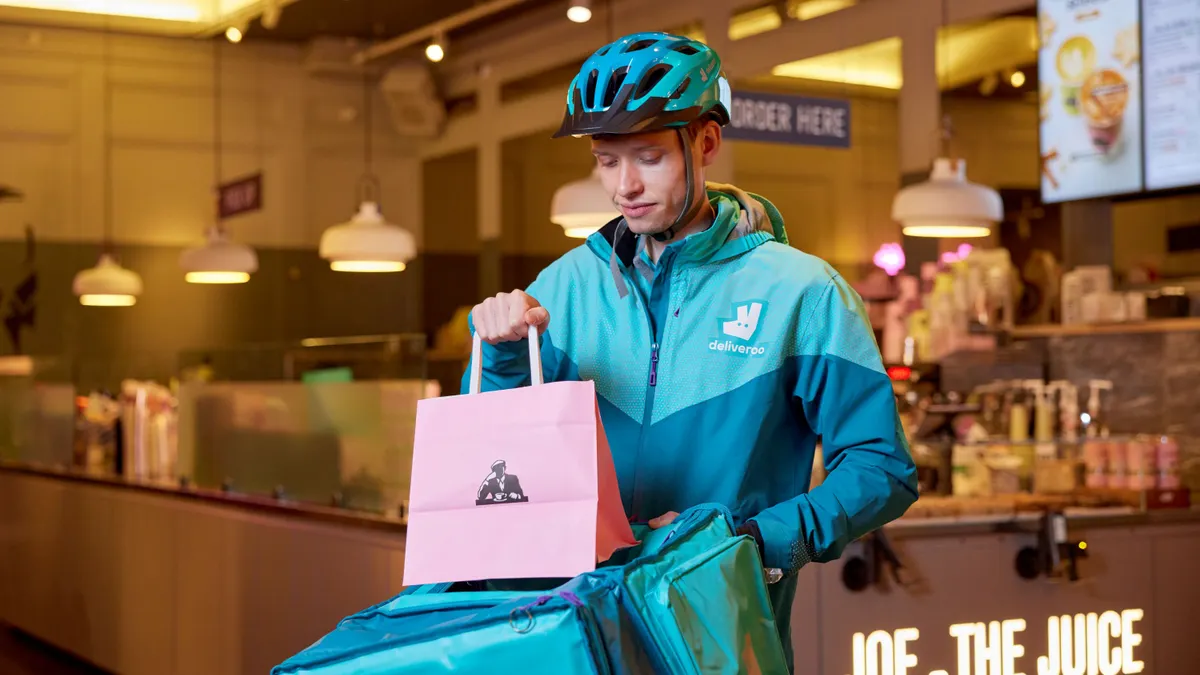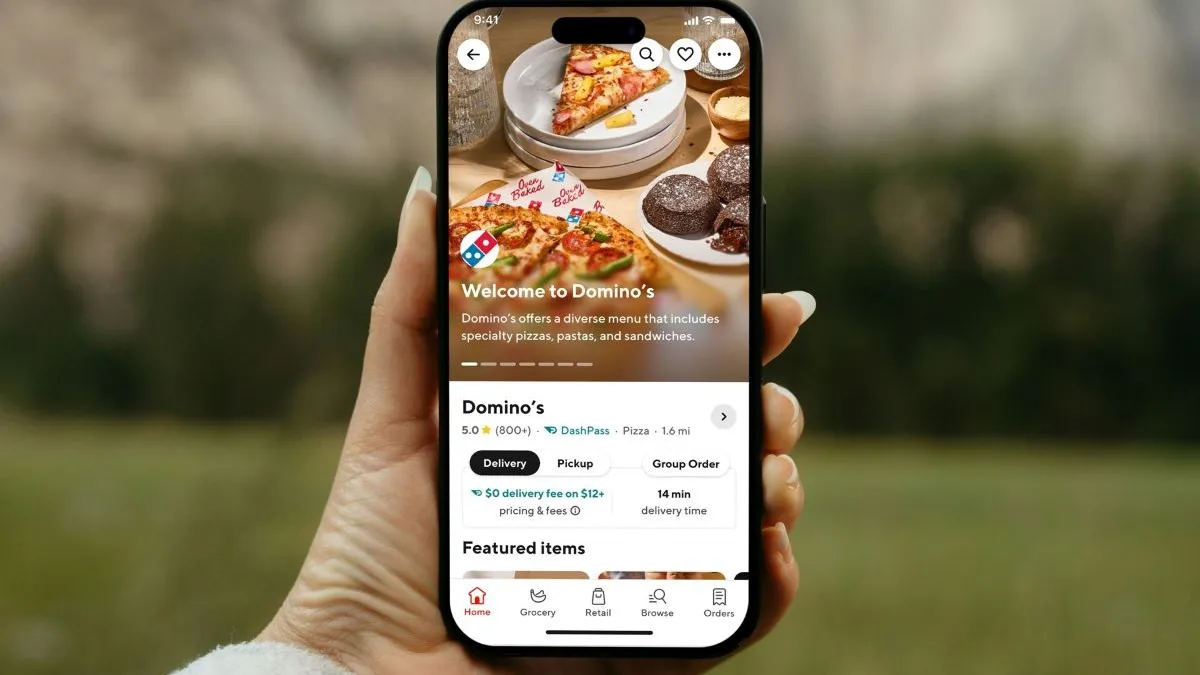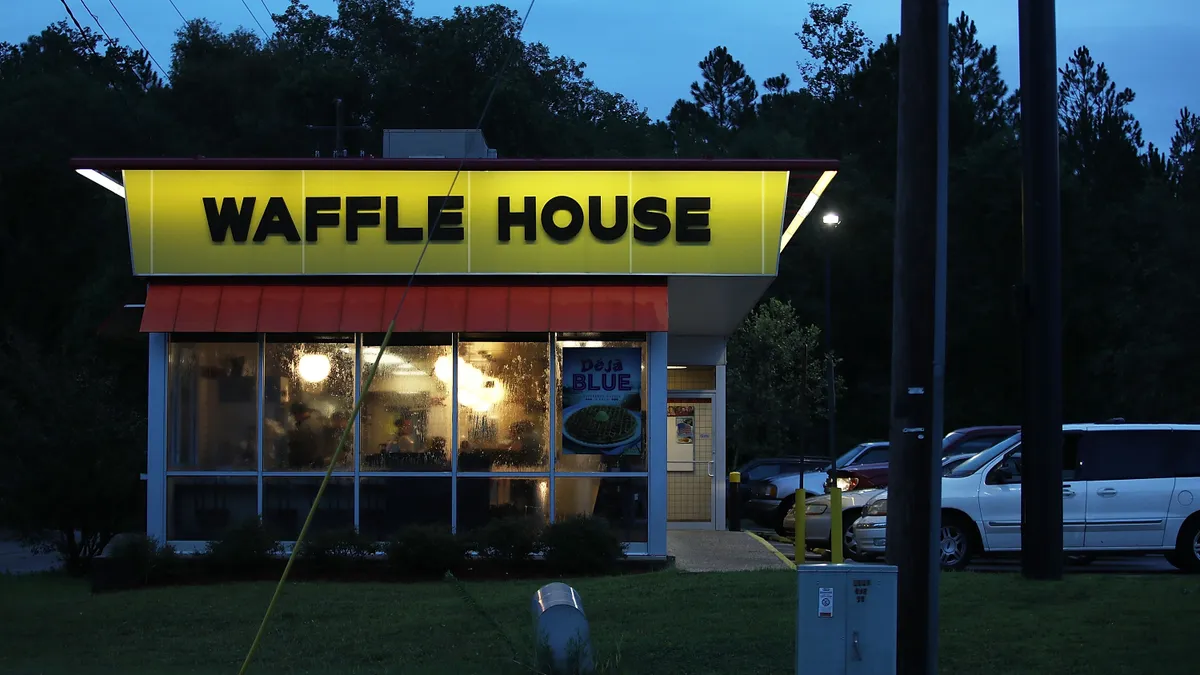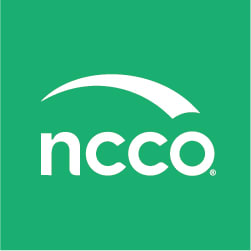UPDATE: March 22, 2019: This article has been updated to include off-premise and delivery initiatives from Darden Restaurants and Del Taco, which were outlined during recent earnings reports.
From McDonald’s partnership with Uber Eats to Yum Brands’ rollout of delivery via Grubhub, third-party delivery is reaching more consumers nationwide than ever before, and restaurants are reaping the benefits of higher same-store sales and increased average checks as a result.
Catch up on their updates here:
Darden Restaurants
Olive Garden's off-premise business, which includes catering and to-go ordering, grew 13% and represented 15.9% of sales during the third quarter of fiscal 2019, which ended Feb. 24, Darden CEO and president Gene Lee said in March earnings call with investors. During Valentine's Day, its off-premise sales grew 20% and the company reported a 52% increase in online orders during the holiday, Lee said.
Del Taco
The QSR Mexican chain expanded its delivery initiatives during the first quarter through a partnership with Grubhub, Del Taco CEO John Cappasola said during a March earnings conference call with investors. The restaurant believes in the multiple service provider approach to capitalize on consumer demand, and will launch additional partnerships with DoorDash and Postmates this year, he said. During its test of delivery, which included multiple service providers, it saw delivery rate improvements at some units, Cappasola said.
"We think every trader is a little bit different. Every market is a little bit different," he said "And the breadth of having the three [delivery service providers] and that's GrubHub, Postmates and DoorDash activated together is important to us."
Check averages are coming in two times higher than store level check out and the company is finding that customers are willing to pay premium pricing because of the added convenience, Cappasola said.
POS integration will be important to the company since multiple tablets were not seen as conducive to efficient operations, Cappasola said. Where it had integration, overall satisfaction scores were higher than drive-thru and dine-in experiences, he said.
Papa Murphy's
The take-and-bake pizza company rolled out an e-commerce platform in March 2018, which helped increase online orders, CEO Weldon Sprangler said during a March conference call with investors. E-commerce sales grew 34% during the fourth quarter 2018 compared to the third quarter 2018, he said.
Online orders were 28% higher than in-store checks during the fourth quarter, he said. Delivery, which is now available in 480 locations, is still a small part of the business, but the company plans to double that number by the end of 2019. Last fall, the company launched a new mobile app which integrates with the company’s POS system to minimize operational impact, Sprangler said. The app has already reached 243,000 downloads and nearly as many orders.
This year, Papa Murphy’s is planning to add a loyalty program and is currently in the process of choosing a partner to help with the rollout, he said.
Noodles & Co.
Off-premise sales grew to 54% of total sales during the fourth quarter of 2018, with help from delivery, which grew 450 basis points from the prior year to 16% of sales, Noodles & Co. CEO Dave Boennighausen said in an earnings press release. Off-premise sales were aided by a rollout of quick pickup shelves and ongoing tweaks to the company's online ordering app, executive chairman Paul Murphy said during a March conference call with investors.
Delivery, which accounted for 3.1% of sales during the fourth quarter, will be available in 95% of the company's trade areas, Boennighausen said during the call. The chain also is testing different pricing strategies to figure out how to mitigate the impact delivery fees have on its profit margins.
This year, the company plans to test improvements to eliminate friction for online order pickup, Boennighausen said. The company also will relaunch its rewards program by the end of the year, and will incorporate more pickup windows with remodels this year, he said.
Chuy's
Delivery makes up about 2% of total sales at Chuy's, but to-go sales make up a larger portion of it sales, about 14%, Steve Hislop said in a March earnings call with investors. The company partners with Olo, an online ordering system, for to-go sales, and the partnership now represents 13% to 14% of all to-go ordering. The Olo platform is a "stepping stone" for the company’s future loyalty program, which is expect to roll out toward the end of the year, Hislop said.
The company is also expanding its catering offerings and now offers it in five markets. Catering contributed $1.6 million in revenue compared to $400,000 in the previous year. The company plans to add six more markets for catering starting in the second quarter of 2019.
El Pollo Loco
All of El Pollo Loco’s restaurants offer delivery via DoorDash and the company recently signed agreements with Postmates and Uber Eats, president and CEO Bernard Acoca said during the Q4 2018 earnings call with investors. Testing and implementation on these platforms will occur during the year. The company also will add digital access points by taking orders from Facebook Messenger, and will enable voice ordering on devices like Amazon’s Alexa, he said.
Famous Dave's
The company will continue to have a strong emphasis on its take-out service, as well as catering and delivery. The casual dining restaurant describes its menu as ideal picnic food that travels well, according to an annual report filed with the SEC.
Delivery, which now represents 50% of sales, is becoming a key driver of sales growth at the chain, and the company plans to expand its capabilities in addition to adopting it within its franchise system, according to a 10-K SEC filing. It has already implemented third-party partnerships for its catering line of business. The company views both catering and delivery as additional ways to access new consumers. Each restaurant has its own vehicles to support catering, and many restaurants already partner with multiple third-party delivery providers.
To-go and catering sales increased by 3.4% and 0.5%, respectively, during the year ending Dec. 30, 2018, following additional investments in these areas, according to the filing. Last year, the company expanded online ordering at some franchised restaurants and plans to continue this rollout with participating franchisees.
The casual dining company also plans to test both a ghost kitchen and virtual restaurant to help increase off-premise sales, according to Nation's Restaurant News.
Habit Burger
Habit Burger’s national rollout of delivery with DoorDash has gone well, and the company expects its rollout with Postmates to be completed by the end of the first quarter, CEO Russ Bendel said during the company’s fourth quarter 2018 earnings call. So far, the restaurant has reported good average delivery times and order accuracy, as well as positive guest feedback. The company has also been receiving higher average checks for delivery compared to dine-in and carryout, Bendel said.
While the company is happy with the results delivery is providing, Bendel said sales aren’t as incremental as the third-party aggregators say they are, and there is a cost associated with delivery that don’t exist with a customer walking into a restaurant. Dine-in guests tend to include a drink, which makes that order highly profitable, he said.
“We’re happy with it and our online channel grew almost 21% from the last quarter, so we’re excited about it,” Bendel said. “It has different economics associated with it than historical dine-in and restaurant sales.”
The company plans to increase its marketing spending to help support delivery as well as its digital efforts, which will include a mobile app, which it has been testing in restaurants in San Diego, Sacramento and Utah. The rollout of that app is expected to occur by the end of the third quarter. It also has been testing self-order kiosks, Bendel said.
Wingstop
Wingstop is making a big push for digital ordering and delivery, with a long-term goal of converting its orders to digital — which currently represents over 30% of the restaurant’s sales, according to Restaurant Business. Digital orders typically have a $5 higher average check compared to normal orders. Wingstop has launched custom online ordering and a mobile app, which has already increased guest checks by 50 cents. It will also explore self-order kiosks and pickup lockers.
Delivery is currently available at 30% of its locations — the company originally tested it in Las Vegas in 2017 — but the company has plans to increase that to 80% this year. The company’s takeout business is already at 75% of its footprint, which CEO Charlie Morrison said makes it well positioned for delivery during a February call with investors.
Cracker Barrel
Cracker Barrel has been testing third-party delivery and has so far been pleased with the results, president and CEO Sandra Cochran said during a February call with investors. Within the next few months, the company plans to roll out delivery to 170 stores with plans to near 400 stores by the end of the year, making delivery another off-premise option for guests, Cochran said.
Overall, off-premise has been a growing portion of the company’s business. It increased 200 basis points during the second quarter of fiscal year 2019 compared to the year ago quarter, with particularly large increases in occasion and catering business, Cochran said. The company benefited from customizable large party offerings.
For the year, its off-premise business has grown 20%, SVP and CFO Jill Golder said. Off-premise made up about 7.5% of sales for the previous year and is expected to reach 9% of overall sales for the current fiscal year, she said.
Red Robin
The casual dining chain's off-premise sales increased 23.2% in 2018 and make up 10.6% of total food and beverage sales, according to an earnings release. Three years ago, it made up 5.4% of sales, CEO and President Denny Marie Post said during a February call with investors.
Catering also has been rapidly growing. In 2017, it had $1 million in sales, growing to $11 million in 2018. Post said she expects sales to at least double this year.
The company's priorities for this year include growing its to-go and catering business. It is investing in improvements to its curbside service this year, Post said. It also will implement digital platforms and restaurant technologies that will support dine-in and improve off-premise growth, she said.
Shake Shack
Shake Shack has been implementing various technologies to diversify the ways customers can order. In addition to ordering in store, customers can use self-service kiosks, a mobile app, a web ordering platform or place orders via pilots with the chain’s delivery partners, CEO Randy Garutti said during a February call with investors.
Delivery, which the company has been testing for a little over a year, has been performing well and boosting its revenue. This was especially true in the fourth quarter, CFO Tara Comonte said during the call.
Digital channels, including delivery, have seen higher average checks as well, Garutti said.
Potbelly
The sandwich chain's off-premise business has grown from 15.3% in sales to 17.5% of sales in 2018, CEO Alan Johnson said during a February call with investors. The company has rolled out delivery and catering at all of its locations, including all-day delivery, and now partners with DoorDash nationally.
Potbelly typically has its own drivers deliver most of its orders during peak lunchtime, but it will supplement with Dashers from DoorDash during peak hours to offer expanded delivery.
"Think of it as a variable labor model where you only pay for it when you need it," Johnson said.
Fiesta Restaurant Group
The parent company of Pollo Tropical and Taco Cabana partnered with DoorDash in late February to roll out delivery to both brands to help accelerate off-premise sales, according to a press release. Delivery is now available to all 139 company-owned Pollo Tropical locations and will be available at all 162 company-owned locations at Taco Cabana in the weeks ahead. The restaurant group is also working with DoorDash to integrate the ordering and delivery process into both brands’ systems.
The company also re-launched its catering program last year for Pollo Tropical, according to an earnings release.
"Growing catering and delivery sales channels are additional significant opportunities for profitable growth," Fiesta Restaurant Group SVP and Chief Operating Officer Danny Meisenheimer said during a February earnings call with investors.
Wendy's
The burger chain reported that DoorDash has helped it grow its delivery footprint — which is currently available at 60% of its North American system — an expansion clip that exceeded its growth expectations for 2018. Wendy’s plans to ramp up that coverage to 80% by the end of the year, CEO Todd A. Penegor said on the company’s February earnings call.
To meet that goal, the restaurant is investing an additional $25 million in digital platforms. Penegor also said that Wendy’s will invest in more advertising around delivery going forward, since many diners still aren’t aware the chain offers delivery and the offering only makes up a small percentage of its business. But the customers who do order Wendy’s for delivery are racking up check sizes 1.5 to two times the size of an average check.
CFO Gunther Plosch said Wendy’s is carefully watching customer satisfaction to ensure that that the service and delivery fees passed on to the consumer when they order through DoorDash don’t undercut the perceived value of convenience.
Food at home is Wendy’s biggest competitor, Penegor said.
"Providing more access and more reach to our brand, complementing our restaurants with delivery is a good proposition," he said on the earnings call.
BJ's Restaurants
The restaurant chain’s off-premise sales reached an all-time high during the fourth quarter, representing 9.5% of revenue, CEO Greg Trojan said during its February earnings call. So far in 2019, year-to-date off-premise revenue is trending higher. When it started offering delivery a few years ago via Grubhub, off-premise made up about 5% of sales and much of that was driven by takeout alone, President and CFO Greg Levin said. The uptick in off-premise has been driven primarily through delivery while takeout orders have flattened.
The company plans to test new technologies related to ordering, payment, pickup and delivery, Trojan said. The restaurant also launched a wine delivery program last year in select locations. It already started testing an order ahead and dine-in service in January to see if it will increase traffic.
Dine Brands
Off-premise initiatives helped boost IHOP's same-store sales by 23% for the fourth quarter, the company stated on its earnings call. The results follow the pancake chain’s partnership with DoorDash, which launched at select locations last summer. Since then, the restaurant has expanded its delivery footprint to 1,000 stores — tripling its initial rollout. This year, it plans to bring delivery to an additional 300 locations.
The company’s IHOP and Go Program — which allows diners to pay ahead and order food for pickup — drives 8% of total sales.
"This year our focus will be on expanding our relationships with another leading delivery service providers as well as increasing marketing efforts aimed specifically at building awareness around our IHOP and Go program and driving new and repeat off-premise business," president Darren Rebelez said on the earnings call.
At Applebee's, Dine Brands said delivery will soon be available at 1,500 outposts, and that both delivery and catering are a top focus for the brand in 2019.
The Cheesecake Factory
The Cheesecake Factory has had significant success with its marketing campaigns to promote its delivery option. Its 40th anniversary promotion to offer 40,000 free slices of cheesecake through DoorDash, its exclusive delivery partner, was so popular that the restaurant increased its offering to 60,000 within five minutes of the launch, President David Gordon told executives during a February earnings call. It also was featured in DoorDash’s recent TV ad campaign. The Cheesecake Factory also is planning additional promotions and free delivery throughout the year.
The restaurant has seen more guests using the online ordering platform for pickup. Online ordering and delivery are helping increase guest frequency and awareness of The Cheesecake Factory, such as how it helped boost off-premise lunch sales, Gordon said.
Off-premise business has reached 14% of total sales in 2018 compared to 12% in 2017, Gordon said. Delivery also makes up about 27% of off-premise sales, he said.
Wetzel's Pretzels
The chain is not only testing delivery with a goal of “Bringing Pretzels to the People,” but it is also looking into non-traditional unit growth with street locations, universities and college campuses and food trucks, according to an earnings press release.
Bloomin' Brands
During the fourth quarter, delivery was rolled out to an additional 200 locations at Outback and Carrabba and is available at over 450 locations, Bloomin' Brands CEO Liz Smith told investors during a February earnings call. Its roll-out of delivery has also included the opening of a handful of delivery/pick-up only co-branded express units.
Carrabba's has been growing its off-premise business with family bundles, catering and delivery platforms, which will represent significant incremental opportunity this year, she said. Outback interior remodels could have space to better accommodate off-premise, she said.
Smith said off-premise has the potential to reach a quarter of total sales over time, and the company has built the infrastructure and technology to support this sales increase. During the fourth quarter, off-premise sales grew 18% to reach a total of 11.2% of sales, she said.
Delivery makes up about 14% of the total business, and is expected to be rolled out to 600 units by the end of 2019, Dave Deno, chief financial and administrative officer said during the call.
Denny's
Denny’s has steadily added delivery across its company-owned and franchised restaurants, CEO, president and director John Miller told investors during the company’s Q4 2018 conference call. About 71% of its domestic system has partnered with at least one third-party delivery company. These orders have total margin rates in the low teens to upper 20% range inclusive of fees. Off-premise continues to be a growing area for the casual brand, making up 11% of sales during the fourth quarter, compared to 7% in mid-2017 when it launched Denny’s on Demand for pickup and delivery orders.
Restaurant Brands International
Popeyes, which began testing delivery in May with Uber Eats, has rolled out the service to 1,100 restaurants, making up about half of its total U.S. restaurants. While delivery represents a bigger portion of sales in the U.S. than before, the company believes it could be even larger, Daniel Schwartz, co-chair of the board at Restaurant Brands International, told investors during its Q4 2018 earnings conference call. The company is also planning to develop two standardized POS technologies that will help better understand sales trends and integrate with other technology, such as mobile apps.
Delivery for Burger King is now available at 3,000 restaurants in the U.S. and nearly 7,000 restaurants globally, Restaurant Brands International CEO Jose Cil said during the conference call. Burger King has partnerships with Grubhub, DoorDash and Postmates. Burger King previously tried delivery in 2011 through its own proprietary program, but consumers didn’t take to the technology like they do today, according to QSR Magazine.
McDonald's
Delivery has become a $3 billion business at McDonald's, which offers delivery at more than 19,000 restaurants globally, Steve Easterbrook told investors during a recent earnings call. Delivery in the U.S., France and the U.K. grew delivery sales in the high double-digits among restaurants that offered the service for over 12 months, while restaurants with delivery in Canada, Italy and Russia posted even higher delivery sales growth. Average check size for delivery is about two times the average of in-store orders, according to Easterbrook.
"Overall, we expect operating performance will benefit from the company’s various initiatives such as modernizing restaurants, Experience of the Future and delivery to help address customers need for greater convenience choice and value," Moody’s vice president Bill Fahy said in an emailed statement. "Although only in its early stages, delivery will help address what seems to be a structural shift in how some consumers are eating, with many consumers finding delivery more compelling despite today’s relatively high delivery cost."
McDonald’s operators are less optimistic about the impact delivery will have on their restaurants. A recent survey of operators completed by the National Owner’s Association revealed that over 750 franchisees were not happy with the economics of delivery, according to Skift Table. Many did not believe delivery was generating cash flow and said they would like better commission rates between McDonald's and Uber Eats.
Chipotle
Chipotle, which partners with DoorDash for delivery, saw delivery gain traction last quarter. Sales spiked 13-fold during the fourth quarter compared to the year-ago period. Promotions have been particularly effective for not just increasing brand awareness, but also sales.
The chain’s free delivery bowl promotion during the college football bowl season in late December helped offset what is a normal drop in sales during the season. This initiative continued to bolster sales well beyond the promotions, executives told investors during a year-end conference call. Nearly half of the guests participating in its free bowl delivery during the college football playoff season were new or lapsed users, executives told investors. The company found success in this campaign, because customers had access via its app and the marketplace and connected it to an event, CEO Brian Niccol said during the call. Its Lifestyle Bowl campaign that began in January generated 1.3 billion earned media impressions during the first few days of the campaign, Niccol said.
The chain is also banking on its quick delivery times, which are under 30 minutes, and will provide easier ways for delivery drivers to pick up orders, such as pick-up shelves, to reduce lag time. The company also plans to launch prepaid, which will be available to delivery drivers, so they don’t have to stop during the pick-up process, Chipotle CFO Jack Hartung said on the earnings call. on Thursday, the chain announced it is testing drive-thru pick-up windows called "Chipotlanes" for digital orders in 10 locations.
Yum Brands
On Thursday, Taco Bell expanded delivery to all 4,000 restaurants in the U.S. with capabilities to order on Grubhub or on Taco Bell’s website, so it may take a quarter or two before it is reflected in same-store sales. Through this partnership, which involved Yum investing $200 million in Grubhub, Taco Bell has integrated its POS system with Grubhub to better streamline the process.
For KFC, the company is working on click-and-collect kiosks and delivery, executives told investors. The kiosks are expected to be in 5,000 restaurants while delivery is expected to be in 70% of restaurants by 2020, Yum brands CFO David Gibbs said on the earnings call.
Yum CEO Greg Creed told investors that he expects higher check values and increased transactions for both brands.
Yum may have additional initiatives going forward, as it is planning to hire a senior leader to focus on global, digital and technology strategies.
Dunkin' Brands
While Dunkin' has already been offering delivery through DoorDash, CEO Dave Hoffman told investors on Thursday that the company will partner with Grubhub for a delivery pilot program that integrates with its POS system. The program will be tested on a small scale and potentially expanded to the larger market. It will continue to work with DoorDash, executives said.
Baskin-Robbins currently delivers via DoorDash and it is available at 70% of its U.S. stores, a 40% increase compared to the previous year, Hoffman said.








